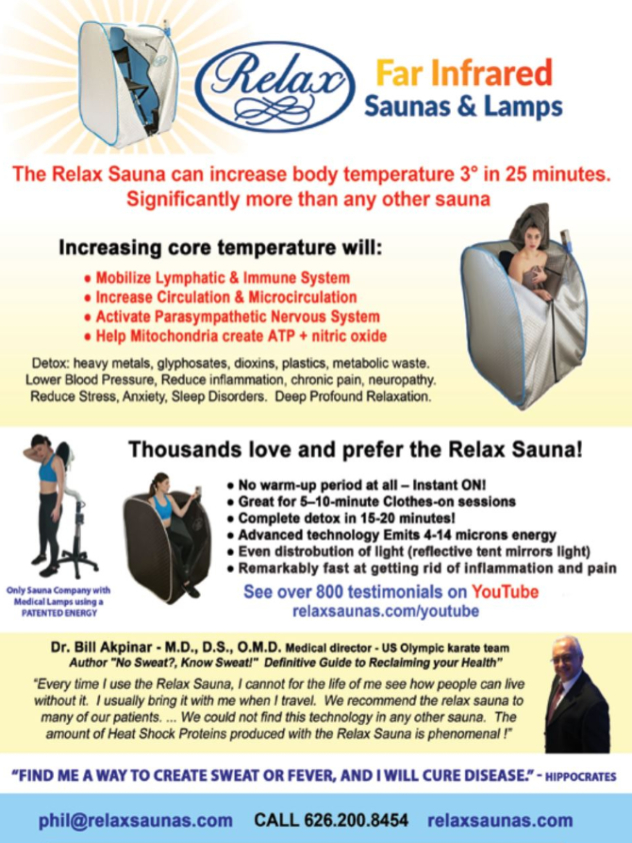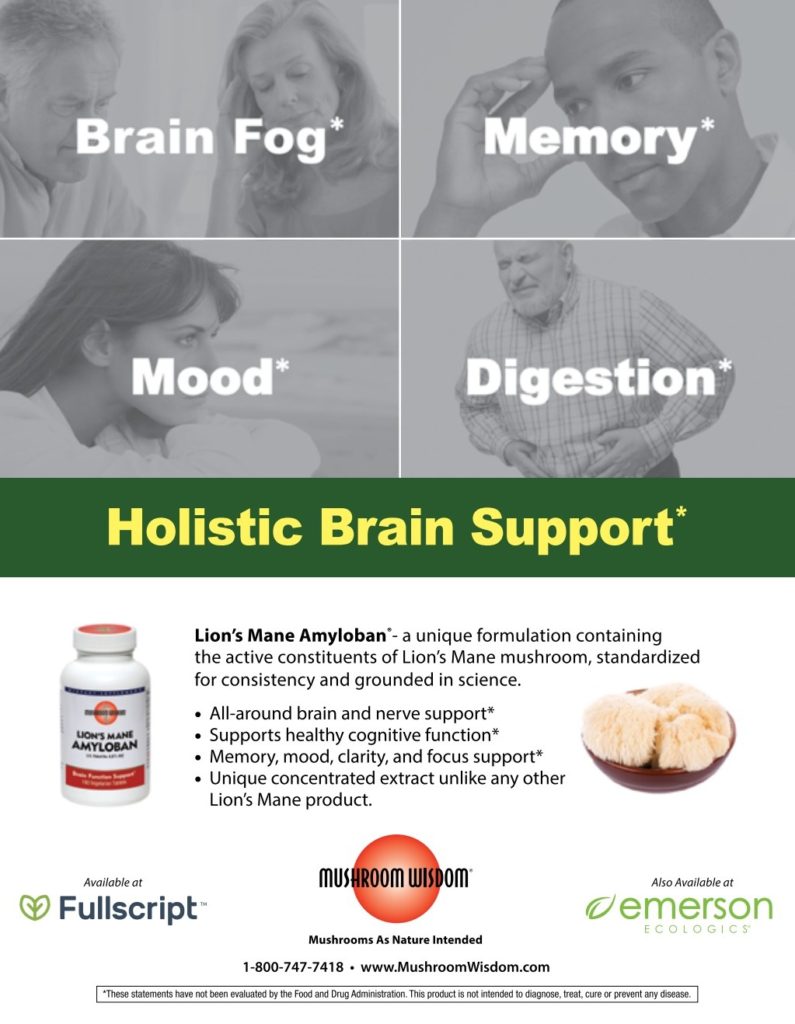Alan B. McDaniel, MD
Preface

Twenty years ago, a middle-aged man came to see Doc for chronic fatigue. He also endured severe pain from spinal degeneration, many times-operated with hardware implanted. After ordering labs, Doc gave him two recommendations: To see an excellent pain specialist and to adjust his diet for his apparent insulin resistance. The consultant’s report four weeks later was memorable: While the patient was waiting for his appointment, the new diet had completely relieved his chronic pain.
Stress, in medical usage, is a challenge to the body’s homeostasis.1 Pain activates a complex stress-response,2,3 and chronic pain can maladaptively perpetuate it.2,4-7 Fibromyalgia and chronic pain conditions promote stress-related endocrine, metabolic, immunological, and psychological consequences that cause a “feed-forward” downward-spiral. This article reviews methods by which these detrimental responses can be identified and the cycle of dysfunction interrupted, then reversed.
Clinically Relevant Stress Responses
The acute stress response is adaptive when triggered by injury or illness: It ensures energy precursors are available, curtails unnecessary expenditures of energy,8-10 and heightens protective immunity. Sometimes, its perpetuation is beneficial, as during starvation – but maladaptive chronic stress is well-documented on intensive care-units.11-13 Such problems are also identified in chronically stressed patients who are not critically ill but ambulatory.14,15 They walk into our offices.
The Practitioner’s Role
People can become ensnared in dysfunction: “… the (stressed patient’s) system may be incapable of returning to its normal operating regime and instead may assume a new alternate resting state.”16 Unfortunately, the standard American diet and lifestyle – and perhaps a healthcare model focused upon acute interventions – are ill-suited for overcoming these problems. Successful practitioners address the patient’s physical needs, emphasizing diet and lifestyle, nutrition, and restoring endocrine balance; and they facilitate patients’ psychological rehabilitation, as their choice of coping strategies significantly influences outcome.17-21
Diagnosing Dysfunctional Adaptation to Chronic Stress
Many patients with these disorders will not have been properly diagnosed. Take a personal and family history, which with physical findings will indicate the appropriate laboratory tests.
History. Symptoms related to chronic stress have been summarized22 and health issues associated with PTSD are reported.23 It is useful to employ a long questionnaire, including questions about intrauterine life and birth trauma,24-26 family of origin, abuse, early memories, and childhood personality traits.27-31 The author’s form (free on request) also collects the review-of-systems, asking prospective patients to score symptom severity on a 0-4 scale. Carefully review their medication and phytopharmaceutical use—many can interfere with the H-P axis and thyroid hormone metabolism.
Affect and behavior. Stress-induced autonomic dystonia is strongly associated with chronic pain conditions, including fibromyalgia.32 Sympathetic over-drive is expressed somatically in well-known ways and psychologically, as “vigilance” becomes hyper-vigilance,22 depression, anxiety, and catastrophizing.33 These in turn worsen the perception of pain, further increasing stress.34-36
Laboratory Diagnosis
The Adrenals. The hypothalamic-pituitary-adrenal (HPA)-axis is up-regulated by stress. When the stimulus becomes chronic, this can continue with elevated cortisol production—or it may become suppressed.37 When elevated cortisol is suspected, check a 24-hour, urinary, free cortisol or a late-night salivary cortisol,38,39 of which a value >5.24 ng/mL is significantly high.40 The increased HP-A axis activity of chronic stress is not Cushing’s syndrome.16,41-43 True Cushing’s is verified with a dexamethasone suppression test.
Low adrenal function is more difficult to evaluate, for both HP-A axis responses to chronic stress can cause it. Hypothalamic-pituitary suppression produces secondary adrenal insufficiency.44 However, a persistently up-regulated HP-A axis and prolonged over-drive can eventually deplete the adrenals, which Selye termed “the exhaustion state.”45 Although “adrenal fatigue” is not an accepted medical diagnosis,46 Selye’s observation is reinforced by subsequent work.47,48 Routine blood tests can offer clues suggesting adrenal insufficiency. These include hyponatremia (in 85-90% of Addison’s); hyperkalemia; low blood bicarbonate; elevated BUN and ESR; mild anemia with eosinophilia and even mildly elevated TSH.49
If “adrenal fatigue” exists, how is it diagnosed? In physiology, “fatigue” is decreased output due to factors related to use (or over-use).50 On the continuum of adrenal dysfunction,51 fatigued adrenals are simply in the process of decline. Thus, the condition cannot be detected by the insensitive ACTH-stimulation test, which identifies only end-stage glands.52 There is no gold-standard biomarker to identify the controversial adrenal fatigue.53 Physicians whose clinical observations are consistent with Selye’s statements can find the following options useful.
Adrenal hormones can be tested to predict “burnout.”54 Many variations of saliva cortisol testing have been used in studies, particularly by psychologists.55
Some patients with normal cortisol-response one hour after ACTH-stimulation report worsening adrenal symptoms, starting a few hours post-injection and lasting a day or more.56,57 Jonathan Wright stated this indicates the lack of adrenal reserve: The ACTH bolus forces-out “the last drop” of cortisol and nothing is left to make more. Because this late collapse is missed by testing only a one hour-cortisol, Wright recommended collecting 24 hour-urine specimens before and after ACTH-injection, expecting the stimulated cortisol output normally to double.
The 24-hour urine adrenal steroid profile (and possibly its variant, the DUTCH test) offers increased sensitivity: As cortisol is the last steroid hormone to become low in adrenal insufficiency,51 applying “metabolomics”—the study of precursors and waste-products—offers greater sensitivity than testing cortisol alone. “Wastes” are the first to show high or low adrenal stimulation and production. Precursor quantities reveal reduced LH and the loss of “back-up” capacity. The cortisol/cortisone ratio is also used to assess adrenal reserve.58-60
Gonadal Hormones. Stress down-regulates the HP-gonadal axis, thus prioritizing precursors to make cortisol.61 However, steroid sex hormones are also made by the adrenals, the status of which influences their levels. Thus, sex hormones can be measured as proxies for the adrenals,62 sparing expense and inconvenience. Men and menopausal women, whose hormone levels fluctuate only in a diurnal pattern, are easily tested. Younger women often have unpredictably irregular cycles due to HP-G axis suppression and reduced insulin sensitivity.61,63 For consistency, check their hormones in early-follicular, on cycle day #4.
Test for what you suspect; fix what you find – then evaluate the remaining symptoms and repeat as needed.
(…a good place to start…)
Thyroid Hormones. Autoimmunity is common – even more so due to the immunological effects of chronic stress,64 so patients with palpably indurated thyroid glands are appropriately tested for thyroid autoantibodies (TPO-Ab & Tg-Ab), as also may be those with a compelling history or other physical findings. When clinically indicated, TSH-receptor antibody (TR-Ab) is added as an indicator of autonomous function or atrophic Hashimoto’s.
Blood tests are proven to accurately reflect tissue levels of thyroid hormones.65 Five tests are ordered: TSH, freeT4 (fT4), freeT3 (fT3), totalT3 (tT3) and ReverseT3 (RT3). Measuring TSH alone is insufficient, due to hypothalamic suppression and other issues.66,67 When the deiodination of T4 to reverse T3 rather than to T3 is perpetuated, a state of functional hypothyroidism can occur (euthyroid sick-syndrome or non-thyroidal illness).68 The value of analyzing these multiple parameters has been supported.69
The active thyroid hormone is T3 (T4 is a pre-hormone). Much evidence validates the concept that RT3 is an inhibitory hormone; it is yin to the yang of T3.70 Thus, the critical measure of thyroid hormone effect at the cellular level is the ratio of T3 to RT3.71,72 Because RT3 is available only as a total measure, total T3 is used to derive this ratio.71,72 The desirable tT3/RT3 value lies between 10 and 14 (probably a bit higher for teenagers). The thyroid gland releases T3 and RT3 in a 10:1 ratio73,74 and tissues normally produce relatively more T3 by T4-deoidination. Studies have determined healthy controls have tT3/RT3 between 11-13.75-77 Note: The ratio compares the TOTAL values for both T3 and RT3.
Insulin Resistance (IR). Insulin resistance is integral to the stress-response; it occurs at a nearly six-times-increased frequency in pain patients.78 Glycemic control is achieved through greater insulin production – and the many effects of insulin to which there is no resistance are exaggerated, causing harm.79 Simply testing fasting blood insulin can be informative80 but this alone is not adequate. Insulin resistance is diagnosed by determining the amount of insulin needed to maintain glycemic control. Like tests for thyroid metabolism, a comparison is necessary – that of glucose to insulin.
Evaluate the relationship of fasting glucose and insulin with any of several methods: A simple ratio,81 or calculations like the HOMA-IR or QUICKI-index.82,83 However, these efforts are insensitive and fail to identify about 40% of cases.84 A dynamic test is needed and there are several.
Insulin “clamp” tests are considered the “gold-standard” but are not unavailable to clinicians.85 Thus, the practitioner’s most accurate test (and increasingly used in research) is a four-hour, 75 gram oral glucose tolerance test, measuring both glucose and insulin. The diagnosis is made by comparing the areas under the curves, which become distorted with resistance.86 Emphatically, blood must be sampled also at 30 minutes – this is not routine on the standard OGTT, but is essential to assess the reflexive first-phase of insulin release.87,88
Other tests give helpful clues about IR and are useful to monitor treatment: Elevated triglycerides and low HDL cholesterol suggest hyperinsulinemia.79 Elevated transaminases do too, as nonalcoholic steatohepatitis is strongly associated with IR. High insulin reduces hepatic SHBG production, with consequently low totalTestosterone to freeTestosterone balance in women. Increased aromatase due to IR reduces men’s totalTestosterone to estradiol ratio.89 Insulin-induced 5-alpha-reductase results in low totalTestosterone vs. DHT in women.90
Test Immune Hypersensitivity. The immune system is activated by stress: The acute, cellular type-1 response shifts in chronicity to humoral, type-2 dominance (which favors atopy and autoimmunity).64 In both, cytokines are released and elevated cytokines are associated with neuro-inflammation,91 fibromyalgia92,93 and neuropathic pain.94 A fundamental doctrine of treating immune hypersensitivity is to reduce its “total load.” Thus, proponents advocate antigen-specific testing and treatment by avoidance and hyposensitization.
While IgE-mediated immunity is observed to effect mentation and behavior (the “allergic tension-fatigue syndrome”),95 it seems non-IgE mediated-immune responses are highly correlated with fibromyalgia and related conditions.96 After the nutritional, endocrine, and metabolic needs of the patient have been addressed, their skin will more reliably respond to allergy tests – in which measuring late and delayed reactions is crucial.97,98 Until then, simple elimination/challenge tests can be performed at home for any highly-suspicious food or allergen. In-vitro tests for antigen-specific IgG can be useful but must be interpreted with a degree of skepticism.
Ancillary Tests. Practitioners cherish particular tests that have borne fruit for previous patients. The author frequently tests for nutritional deficits associated with chronic pain, including vitamin 25(OH)-D3,99 iron/ ferritin,100 potassium, RBC magnesium and zinc and, by hair elements analysis, lithium.101
Treatment
The protocol is simple: Test for what you suspect; fix what you find – then evaluate the remaining symptoms and repeat as needed. The complexity of maladaptive chronic stress requires an orderly process, though – to the extent of your patient’s abilities. At the first visit, patients can begin to correct two “core” problems, adrenal fatigue, and insulin resistance.
Adrenal. Sufficient cortisol is essential to sustain virtually every metabolic function. The persistent lack of cortisol in chronically stressed-individuals promotes vulnerability for the development of post-traumatic or stress-related bodily disorders.102 Also, the stability of the thyroid, gonads, and even neurosteroids depends upon the foundation of healthy adrenals. So, we start by supporting the adrenals—while the patient considers diet and lifestyle choices.
Hydrocortisone (cortisol) is the preferred treatment for complete adrenal gland failure, about 20 mg/day (10-12 mg/m2 body surface area) in three divided doses/daily, mimicking normal diurnal variation.44,49 Although the use of low-dose supplemental hydrocortisone (HC) 5-10 mg/day has been validated by Cleare et al,103,104 he later cautioned against it: Low dose-HC will suppress the already dysfunctional HPA-axis and further depress the sex hormones.105
There are good alternatives—over-the-counter nutrition and precursors—to prescribing HC. Nutrition—from desiccated neonatal bovine adrenal cortex (a “glandular”)—can give significant and enduring improvement, apparently by replenishing co-factors for the enzymes of the steroid-synthetic pathways. This benefits all steroid-synthesizing tissues: The adrenals, gonads and apparently also the brain, which importantly synthesizes neurosteroids. While adrenal cortical tissue retains negligible cortisol,106 and the glandular is theoretically hormone-free, some brands contain nanogram-doses of cortisol and even T3.107
As with hydrocortisone, the timing of glandular doses is important – with a vital difference: HC is taken when the body needs cortisol, but nutrition needed for its synthesis must be available when the body starts to make cortisol. Cortisol production mainly occurs overnight, when levels rise from their nadir at bedtime to the daily peak at waking. Thus, the single best time to take the glandular is at bedtime. Because “re-feeding” symptoms can occur—with wakefulness, enormous energy and vivid dreams—have patients start one tablet (or less!) in the AM and gradually build their dose—as tolerated –to waking, midday-meal and lastly, at bedtime.
Bypass the “roadblocks” with precursors. The HPA-axis may be depressed, meaning insufficient ACTH production – which controls the rate-limiting step of steroid production, the conversion of cholesterol to pregnenolone.108 This roadblock in the synthetic pathway is easily circumvented by giving pregnenolone – the product – which is over-the-counter safe, inexpensive, and effective.109,110
As the precursor of all adrenal, gonadal and neuro-steroids, pregnenolone replenishes steroid pathways, starting with progesterone,111 exerts a mild GABA-ergic effect112 and can reduce pain/stress responses.113 Safety is ensured by feedback inhibition114 and “downstream” enzyme regulation, which prohibit overproduction of cortisol due to any excess of precursors.115,116
Start pregnenolone after your patient achieves the full dose of adrenal glandular, without which this precursor may be of little avail. Women start with 10 mg daily, usually at bedtime and often need 20 mg daily, which per preference can be divided AM and bedtime. Cycling women often double the dose on cycle days 14-24. Limit a man’s dose to 5 mg daily, best at bedtime.
Side effects can occur when starting pregnenolone treatment–because it works, allowing patients to make formerly suboptimal hormones: Cortisol production can give excess energy and perhaps wakefulness early in the AM. Aldosterone adds a few pounds of water weight as salt is retained. Increased progesterone can enlarge breasts ½ cup-size (concerning in men) with heightened nipple sensitivity. These effects remit in about a month, when the body has adapted to its restored hormone production. Finally, neurosteroids calm people, sometimes quite surprisingly, and menstrual cycling can resume with increased fertility (caution – accidents cause people!).
Stress disrupts luteinizing hormone (LH) production, which regulates steroid sex hormone synthesis two ways: LH activates gonadal production of pregnenolone, the step regulated in the adrenal by ACTH. Importantly also, both in adrenals and gonads, LH activates 17-20 desmolase (lyase) to move precursors of cortisol to the sex-hormone pathways, producing DHEA and androstenedione. Chronically stressed patients (CFS, chronic inflammation) have reduced DHEA.117,118 Supplementing DHEA bypasses the reduced 17-20 desmolase activity.
Prospective studies show DHEA supplementation benefits women with Addison’s,119-121 hypogonadal men,122-124 soldiers in survival training,125 and CFS patients.126 DHEA has OTC safety: “Downstream” enzymes are regulated to prevent over-production of testosterone.115 However, androgen-excess can follow excessively high DHEA doses via conversion in tissues, particularly in the skin (acne, hair loss or hirsutism). Because DHEA is a weak androgen, there is also concern it may compete with testosterone for androgen-receptor binding sites and inhibit its effects.
Men’s best DHEA doses are usually 25 mg-daily, occasionally 50 mg122; women rarely need more than 10 mg (added to pregnenolone). Regardless of dose, oral DHEA usually results in elevated blood DHEA-S, apparently from conjugation during the hepatic first-pass – so, monitor therapy by testing unconjugated DHEA, testosterone, or urine adrenal steroid profile.
Stimulate the depressed HPA-axis. Naltrexone is considered a safe drug127 and the standard dose is known to stimulate the HPA axis, significantly raising ACTH and cortisol in humans.128 In low doses (LDN), it has been used successfully to treat the related disorders of chronic fatigue syndrome/myalgic encephalomyelitis,129,130 and complex regional pain syndrome,131 with benefits including the reduction of pro-inflammatory cytokines129 (one effect of cortisol) and protection of the microglia.132
Insulin resistance (IR). Treatment for suspected IR can begin at the first office visit, sometimes with spectacular results. Diet recommendations are simple: Eat no sugar, no starch, no fruit, nothing sweet (even stevia) and take “vitamins.” Technically, the diet is described as low glycemic-index; low insulinemic-index and supplying slowly accessible glucose.79 Many acceptable versions exist, from Atkins to “Candida” to ketogenic.
The lack of sleep worsens insulin resistance.133,134 Recommend between eight and nine hours of sleep daily and if present, promptly address sleep apnea syndrome. Exercise improves insulin sensitivity in muscles, which consume 75 to 80% of post-prandial glucose-load.135,136 So, recommend physical activity, at least walking, for 30 minutes every day—understanding that chronically ill-people may need a long time to reach that goal.
Diet and lifestyle measures are more effective than medications.137 Of these, metformin may best address the fundamental cause of IR – defective insulin-stimulated translocation of glucose-transporter isoform 4 in muscle (and adipose) cells.138 Berberine has similar effects. Lack of space prohibits discussion of which to choose and how to give them, but it should be noted that both seem to block GI absorption of simple sugars—so they must be taken with a good diet, else lower GI symptoms resembling lactose-intolerance will occur.
The uses of chromium as a nutrient and vanadyl sulfate as a nutraceutical are surprisingly well supported in the medical literature. An excellent effect of these supplements is to curtail cravings for sugar and starch.
Thyroid hormones. The stress-related inhibition of T4-activation is metabolically comparable to driving in first-gear with the parking brake on. Remember: It is adaptive when people are unstable. Therefore, we start thyroid treatment only after the patient’s adrenals are supported with a “glandular,” perhaps a precursor and when they are eating a healthier diet.

The “key” to thyroid hormone dysfunction is this postulate: ReverseT3 (RT3) inhibits the action of T3. The assertion is controversial but as stated above, there is good evidence for it. When the tT3/ RT3 ratio is persistently low, successful treatment is based on a simple fact: Approximately 95% of circulating RT3 is made from T4.139 To restore a desirable tT3/ RT3 ratio and “release the parking brake,” prescribe T3, which will bypass another stress-induced blockade: Dysfunctional T4-deiodination.
Therapeutic T3 acts on the HP-T axis to reduce T4 production, thereby decreasing circulating RT3 and restoring a good T3/RT3 ratio – and cellular thyroid function.140 When given for chronic conditions (not acute), T3 treatment has been reported to be beneficial in a wide variety of laboratory and clinical settings.
Several points must be remembered: The half-life of T3 is brief, so the dose must be divided at least every 12 hours141 and sometimes every eight. If your patient is hypothyroid and taking T4, divide the T4 dose, then replace some of it cautiously, using a rough equivalency of 5 mcg T4 = 1 mcg T3. Remember, everyone needs some T4—but not 100% T4. Euthyroid-sick patients need to take only T3: They will make their own T4 unless TSH is badly suppressed.
The risks of prescribing biologically identical T3 (after adrenals and diet are addressed) are simple: We might give too much – or too little. Therapeutic blood levels should be tested according to peak/trough fluctuations, preferably at mid-dose: Again, the ratio of tT3/ RT3 is the most accurate measure of the actual thyroid hormone function at the cellular level.
Two therapeutic interactions require attention: First, the stimulatory effects of caffeine relieve some symptoms of ambulatory ESS but that dose can become intolerable once tT3/ RT3 is normalized. Taper-off and stop all caffeine as T3 is cautiously escalated. Secondly, T3 and estradiol have complicated interactions and T3 treatment can “unmask” estradiol deficiency: Sleepless nights and hot flashes may resume and T3 will be blamed– but it is not the real problem.
Gonadal hormones. The stress-induced loss of gonadal hormones can have significantly adverse results.142-145 The trophic effects of steroid sex hormones on the body and brain (they are precursors of neurosteroids) emphasize the importance of treating chronically stressed patients.146,147
Strategies for supplementing DHEA and pregnenolone are described above. Their ability to increase sex hormone production was cited – and effectiveness in pain management has been demonstrated in humans.145,146 Menopausal women can produce normal follicular levels of progesterone and testosterone from pregnenolone and DHEA supplementation—but not estradiol.
Low estrogen levels are significantly correlated with the perception of pain in women worldwide and replacement should be considered.148-152 Certainly, the risk vs. benefit of hormone-replacement therapy must be calculated for each person individually. When a menopausal woman receives the proper dose of estradiol (caution: There is a “J-shaped” curve),153 its CNS-protective effects154-157 are most reliably achieved with modestly-dosed transdermal delivery. Importantly, although progesterone is beneficial, progestins (not bio-identical) are not—they worsen pain and fail to protect the brain.158
Sex hormone imbalances are related to insulin resistance. Men excessively convert testosterone to estradiol by insulin-induced aromatase.159 Natural (chrysin) and prescription (anastrozole or letrozole, in small doses) aromatase inhibitors can restore a desirable testosterone/estradiol balance. Clomiphene, used to overcome hypothalamic hypogonadism (low testosterone) in men,89 also inhibits aromatase.
Women’s 5-alpha-reductase (5α-R) is up-regulated by insulin.90 This causes unbalanced neurosteroids and is related to PMDD/PMS, dysmenorrhea, menstrual migraines, and even catamenial seizures. A variety of natural 5α-R inhibitors can help (saw palmetto; chaste tree/vitex; turmeric/ curcumin; reishi and St. John’s wort). These are most effective after the insulin resistance has been addressed by diet, lifestyle, and supplementation as indicated.
Allergy/Hypersensitivity. Successful hyposensitization immunotherapy improves many symptoms associated with fibromyalgia and this treatment is encouraged after proper testing. Alternatively, low-dose allergen immunotherapy (LDA; also enzyme-potentiated desensitization) can succeed160,161–sometimes dramatically.
The success of immunotherapy suggests not only that fibromyalgia is associated with non-IgE immune hypersensitivity but that fibromyalgia may have more manifestations than is commonly appreciated. The concept of “central nociceptive hypersensitivity” is generally accepted for somatic nerves (muscle pain, joint pain [TMJ], and trigger points)162 and reports suggest visceral nerves are also involved, causing irritable bowel, pelvic pain, and interstitial cystitis. Does FM also induce cranial nerve hypersensitivity? Cephalgia, olfactory, vestibulo-cochlear and even ophthalmological symptoms can respond to immunotherapy, implying this may be the case.
Psychotherapy. This vital service has earned high esteem: It alone is often successful.163,164 It is plausible that restoring a patient’s body facilitates this work – and referrals from therapists endorse this idea. When we mitigate sympathetic over-drive; correct HP-adrenal problems; relieve dysfunctional thyroid deiodination; restore and balance gonadal hormones; quench hypersensitive immune release of inflammatory cytokines and correct other nutritional and medical issues… how could this fail to improve patients’ ability to respond to psychotherapy?
Summary
Persuasive evidence indicates that fibromyalgia and chronic pain conditions often have neuro-psychological origins or amplification, triggering and being maintained by the stress response. Because the central nervous system both regulates and responds to the immune and endocrine systems and the metabolism, the dysfunction becomes a “vicious cycle” in which patients become trapped. The successful practitioner understands mechanisms of this problem – and methodically treats the underlying causes, employing the resources of allied specialists as needed.













